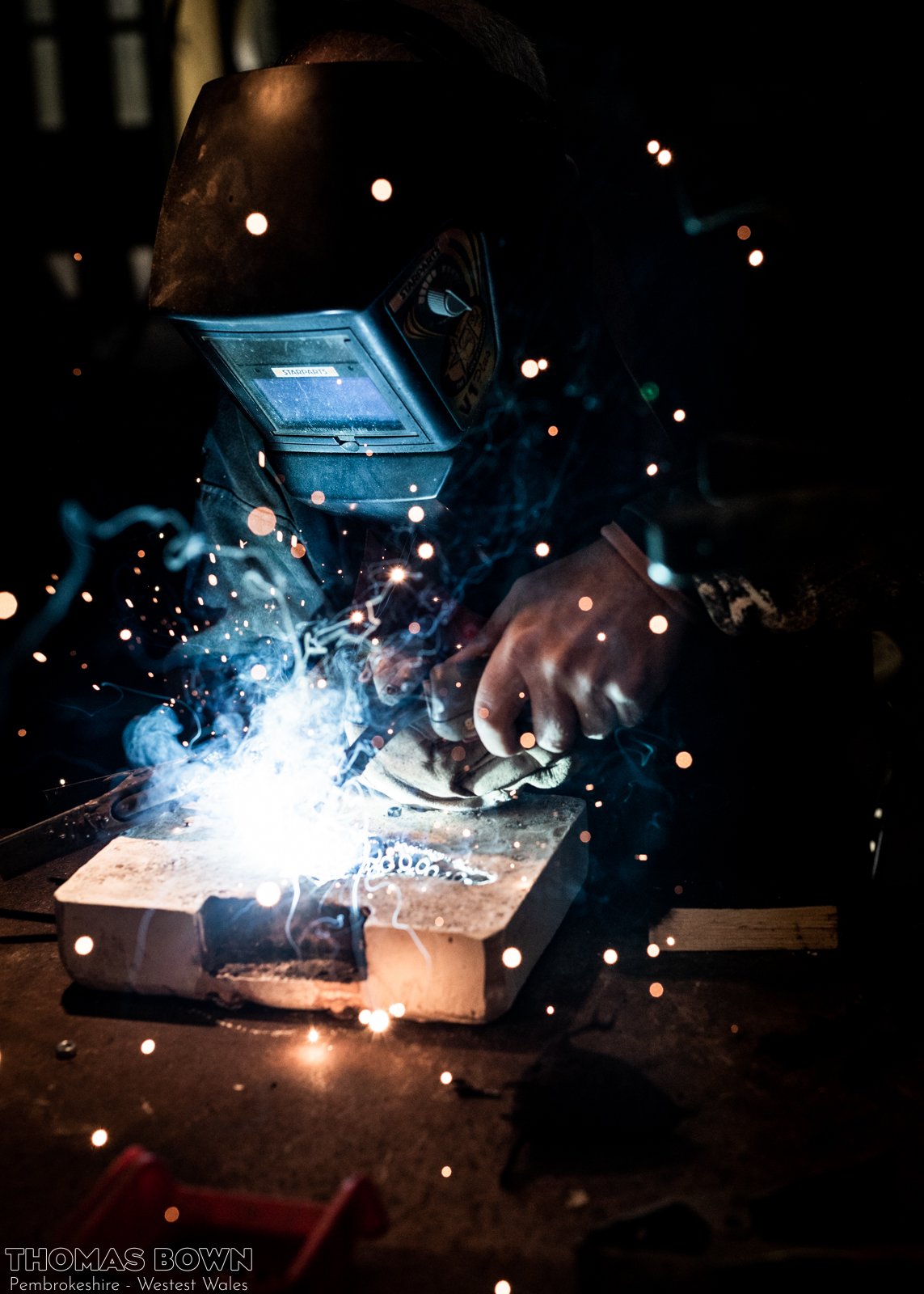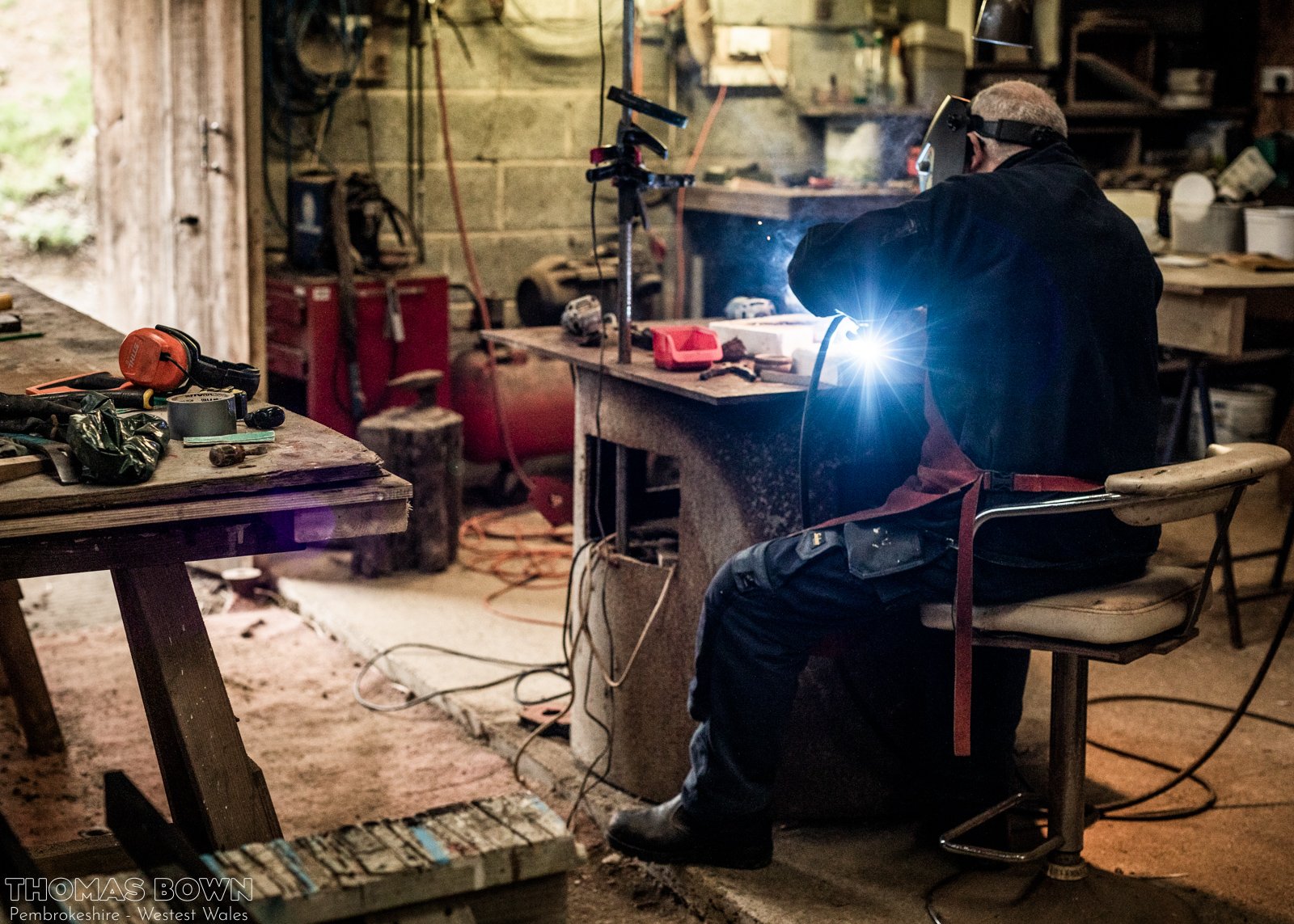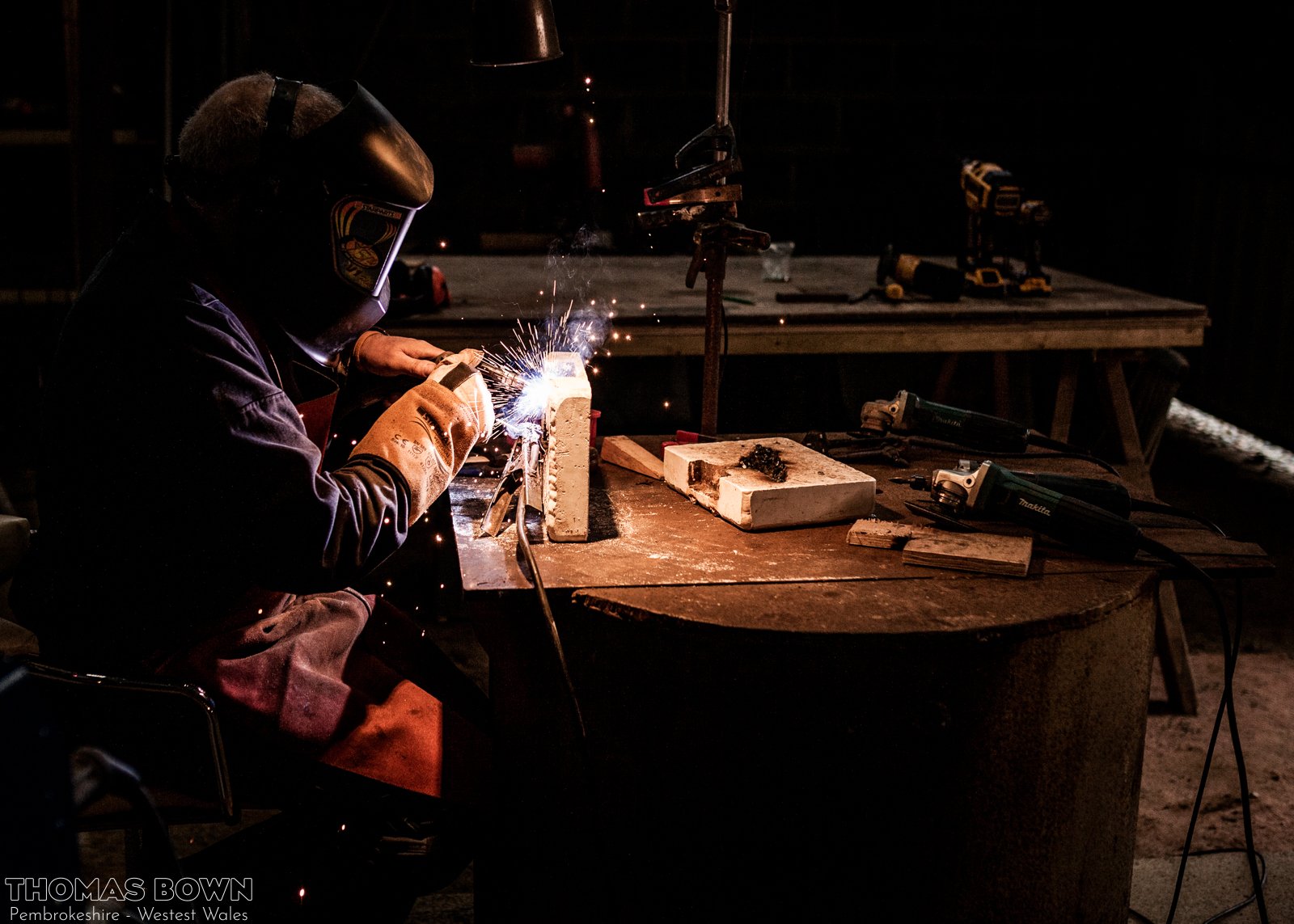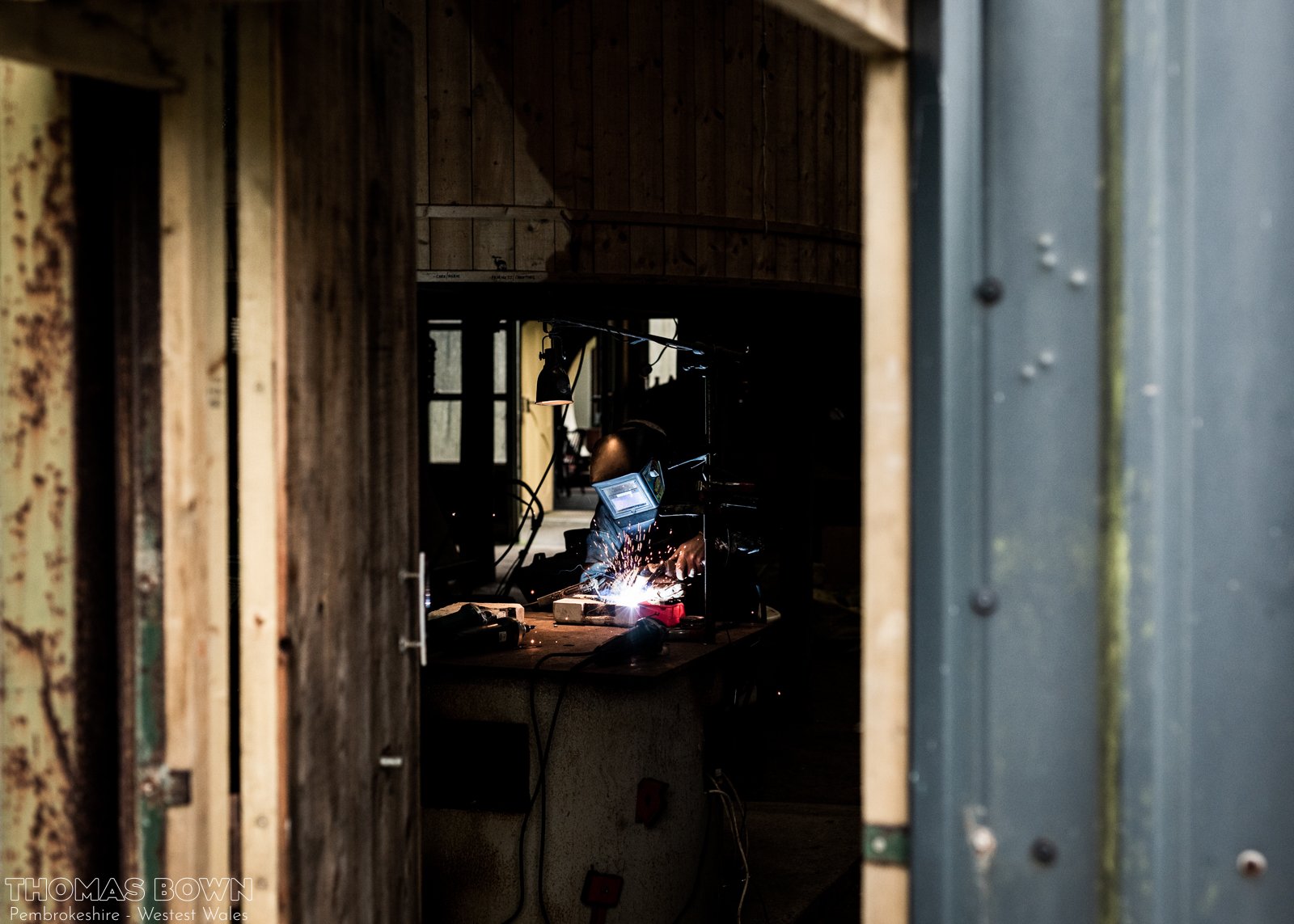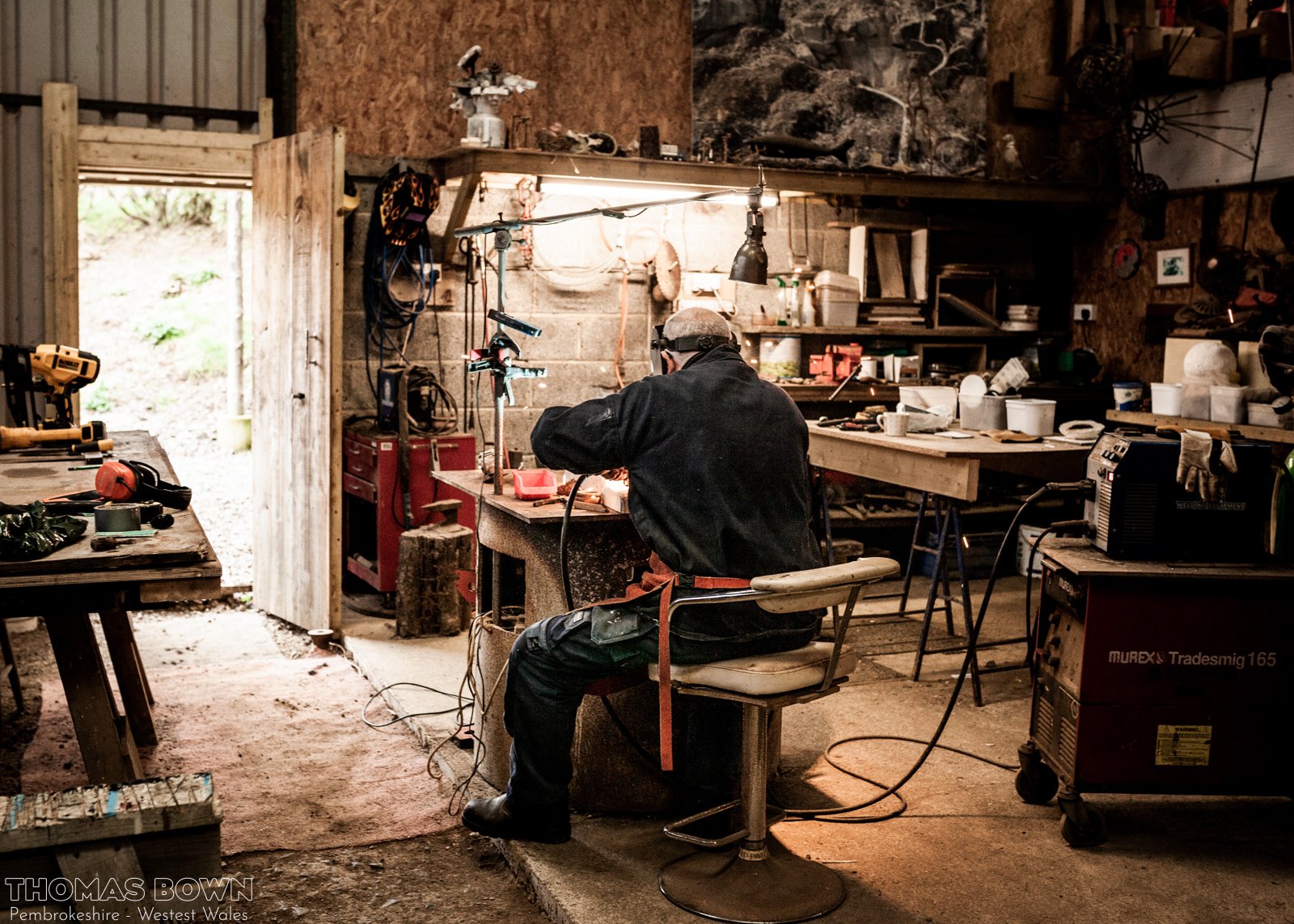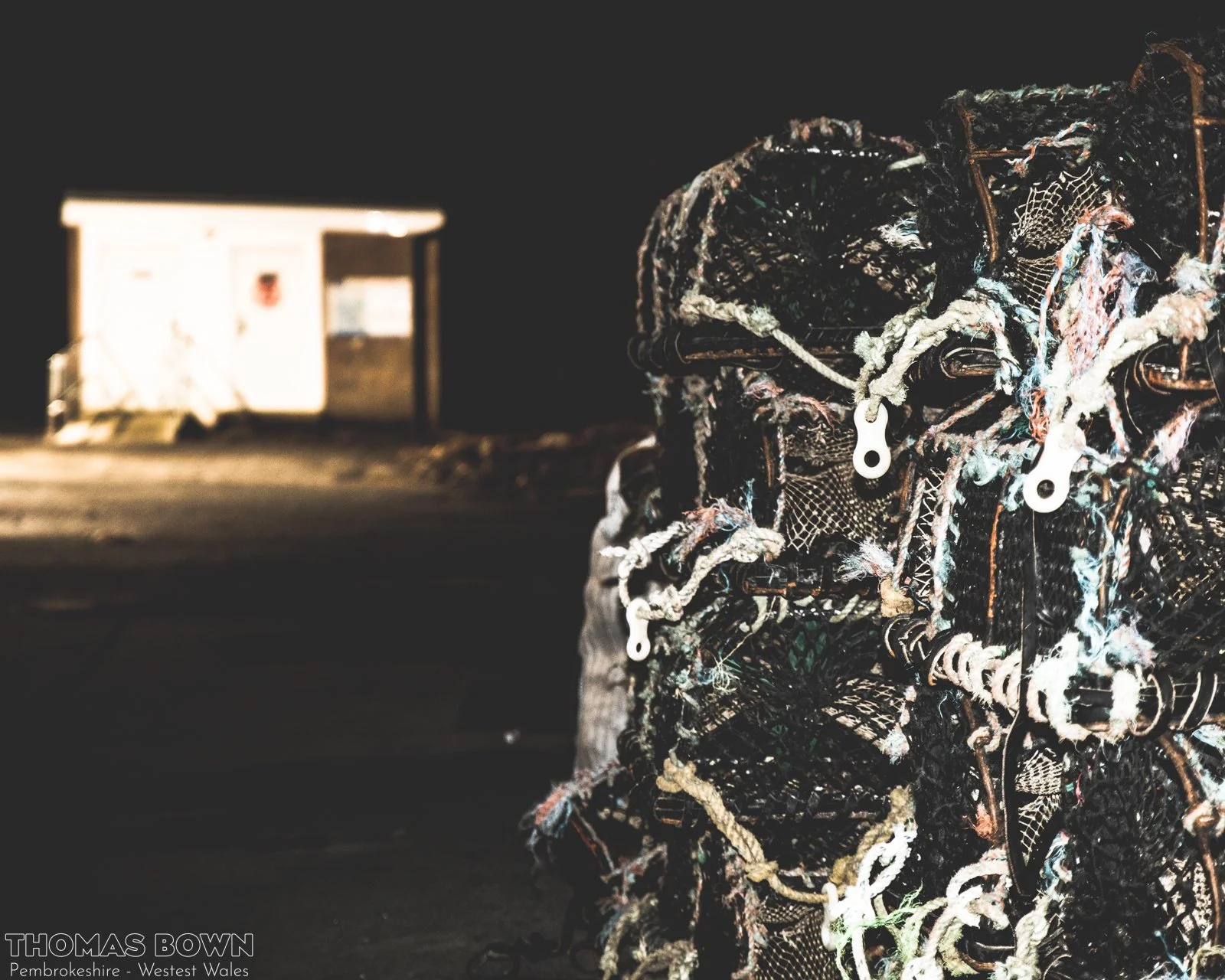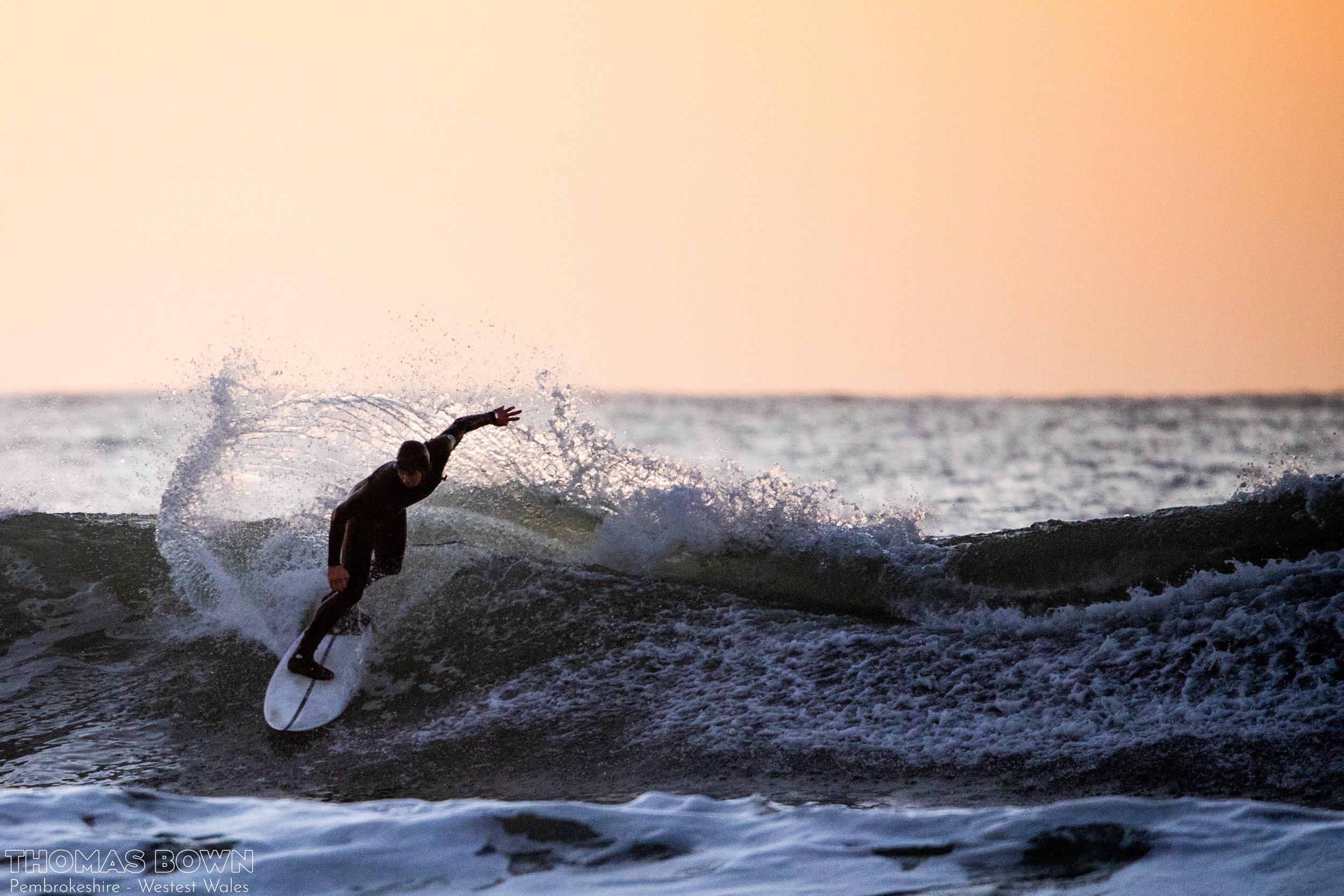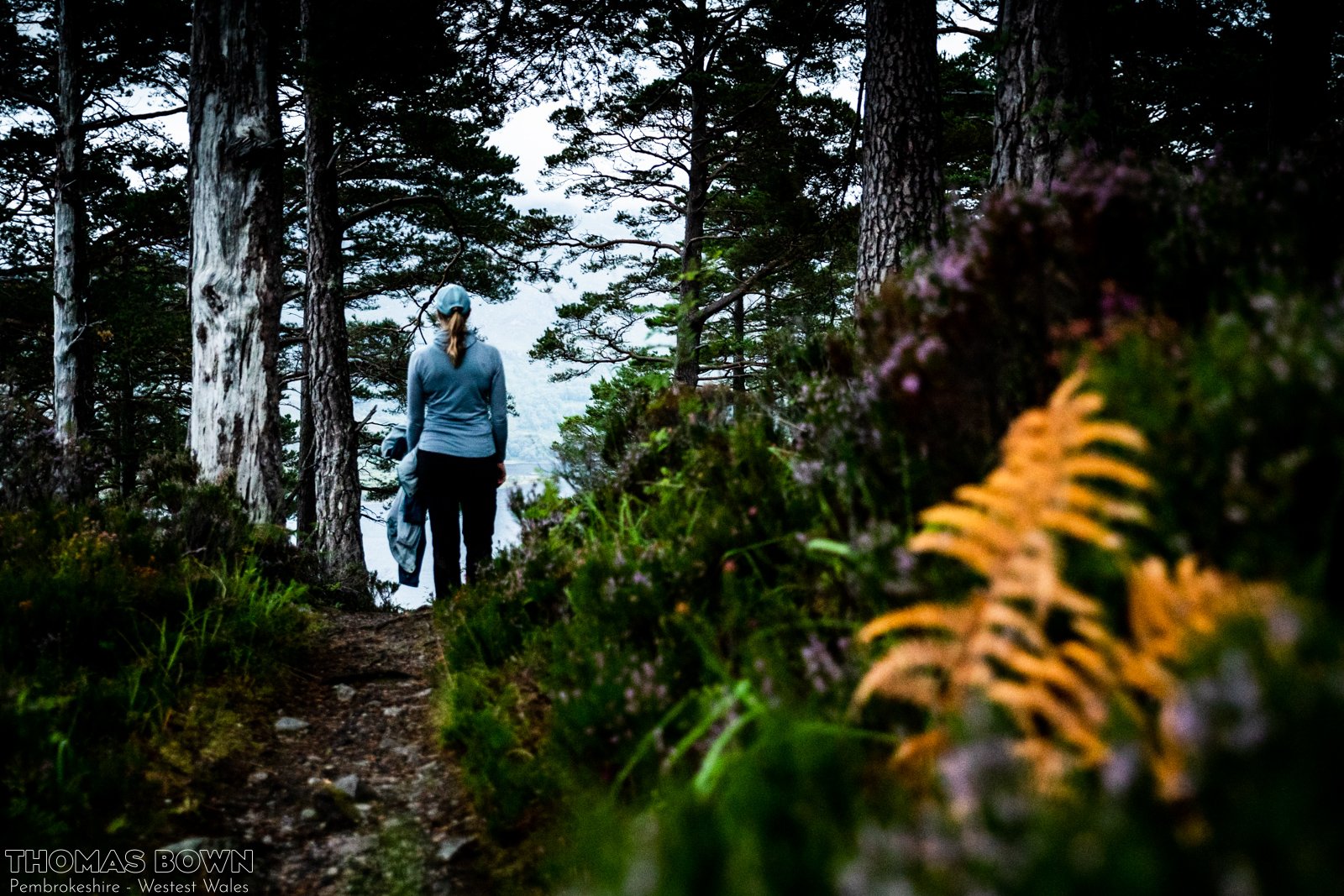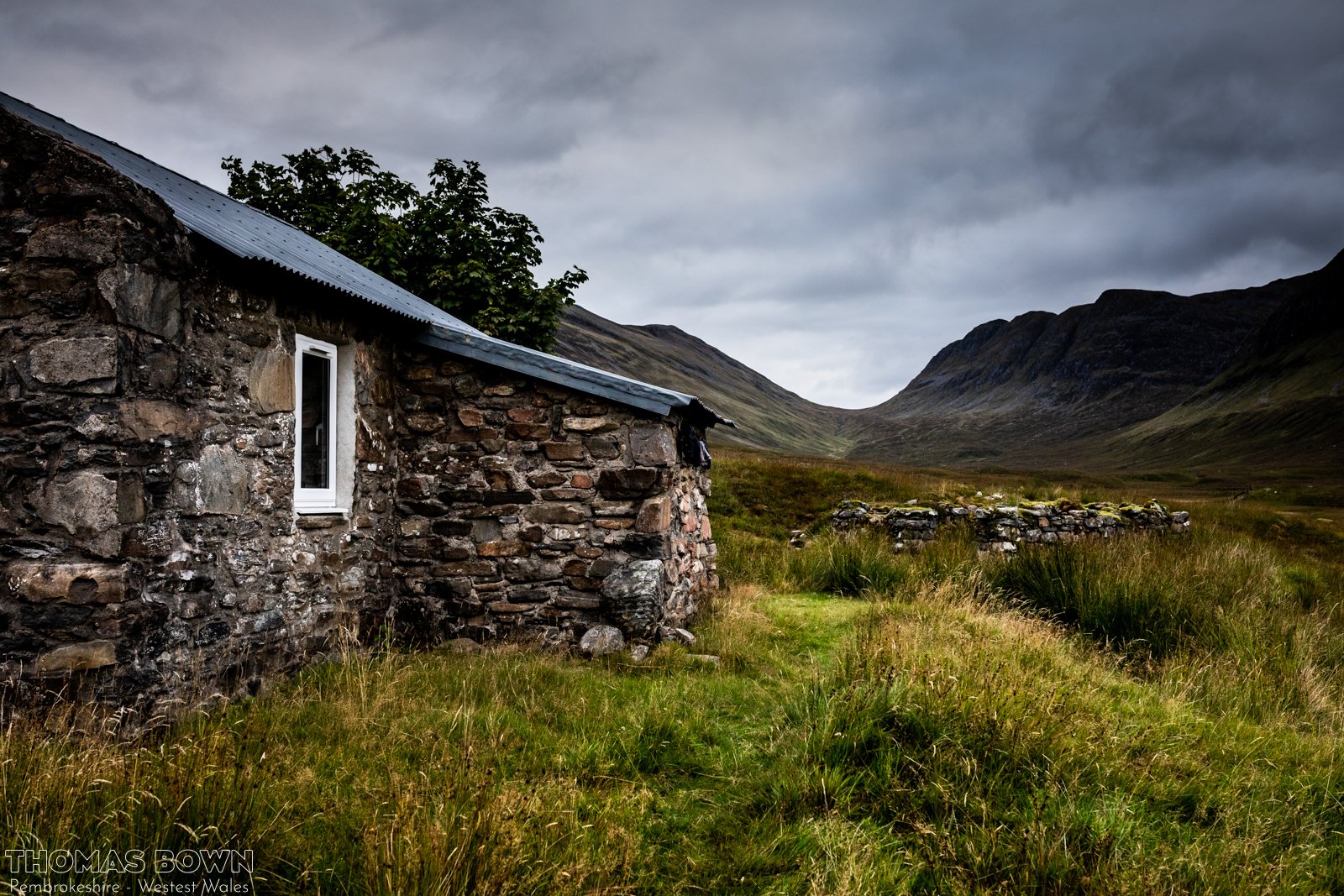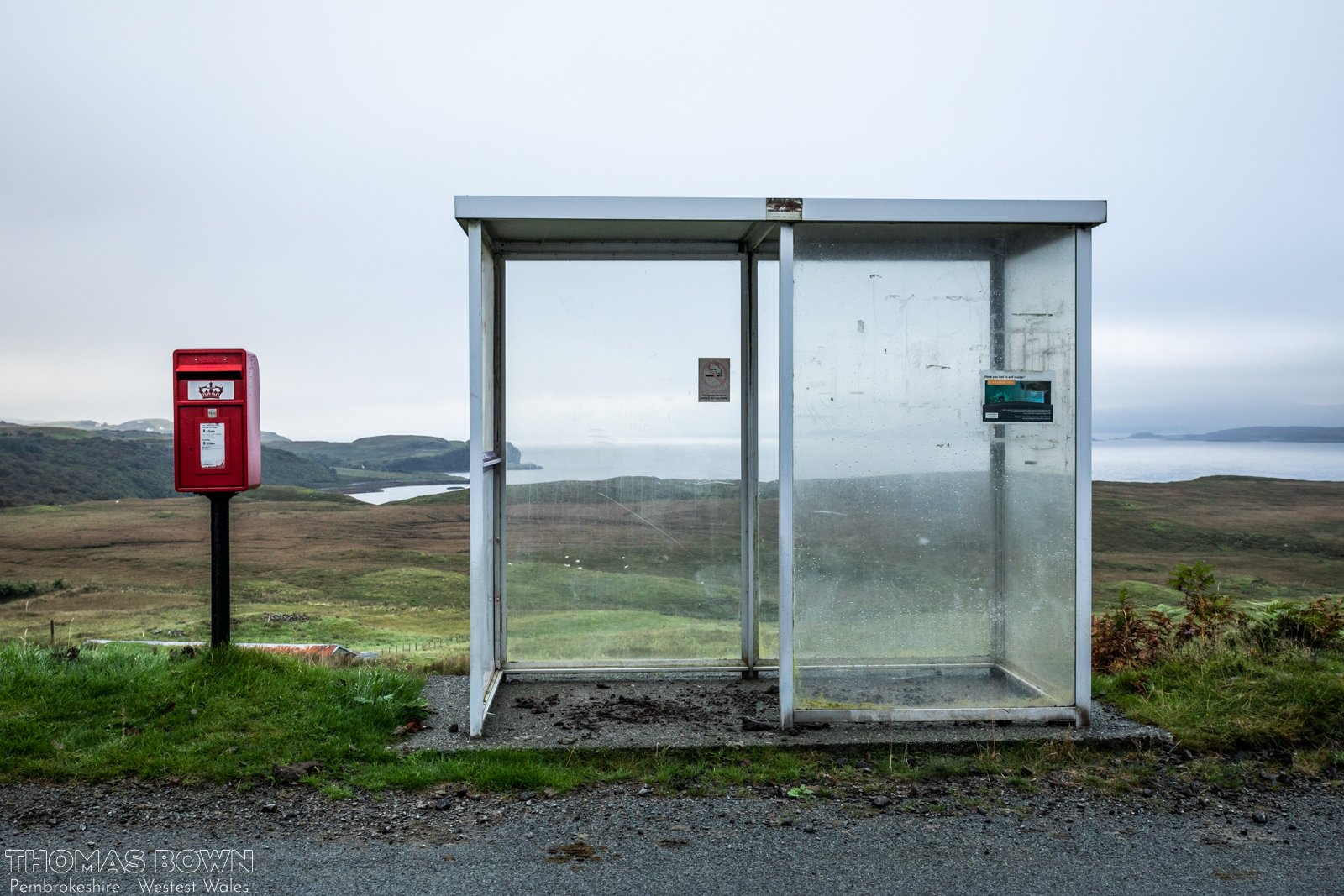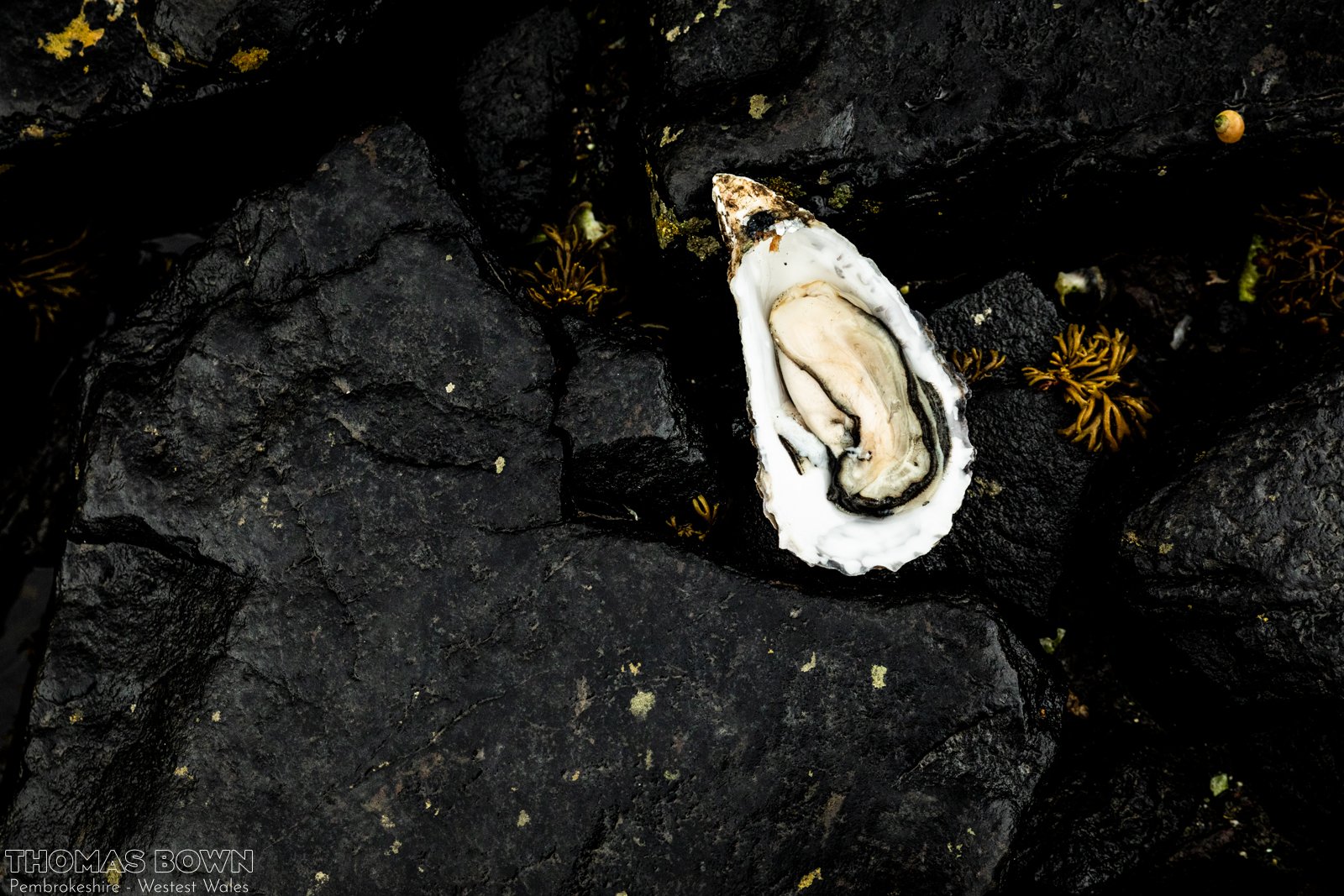I went to see Tim Williams in his workshop before Christmas. Tim is a Pembrokeshire artist with a playful approach to his sculptural work. Using metal in a variety of ways he creates pieces on a scale from tiny figurines to large multi-element installations incorporating old machinery that lend motion to the work. His carpentry skills are also used to make one of his latest evolving pieces; a black chapel which awaits the gathering of a congregation of saplings when the work is complete. Tim is the son of a Pembrokeshire sheep farmer and his work is informed by the people, animals and cultural landscape that have shaped his world since his youth. Noticeable in his approach is the improvised nature of his techniques, like the farmer finds what works for him in the yard when something needs fixing or fashioning, Tim plays with materials and industrial tools to get results that realise his vision. The resulting style is organic and echoes the people, animals and the rural and coastal landscape that surrounds him. Tim exhibits some of his pieces in Oriel y Clawdd which you should keep an eye out for if you find yourself deep in the back roads of North Pembrokeshire.
Harbour Flashing
I’ve always been slightly terrified of using flash. For me the split second of light has been impossible to predict with any certainty and the fear of missing a moment, ruining an image and also the attention it brings upon me as the photographer has made me shiver. The flash has seemed to me to be annoying to the subject and intrusive to most scenes and so I’ve always preferred to shoot things in natural light as what I see through the viewfinder is what the picture ends up looking like, barring any technical errors (camera shake, wrong settings etc). One of the messages I got from reading books on flash photography is that there are rules with using flash and these need to be understood in order to avoid eternal shame! This was one of the big reasons I felt intimidated. However, lately I’ve started to come around to realising (I know I’m late/stupid) how useful the flash is in making shots that wouldn’t be possible using only natural light, the additional creative element of bringing light to a scene and the potential to make images inspired by those I admire from others. It’s time to dive in.
I’ve used flash in my (makeshift) studio settings and enjoyed the process as it feels like a science experiment to adjust variables, move the light source and subject to suit and create images in a semi-controlled fashion. But outside of that controlled setting the fear sets in. Bouncing flash off ceilings or walls has seemed particularly hard to predict.
This year, I am making attempts to master the flash, at least as much as will be useful to me in creating the images I want to. The shots below are an early experiment in this process. I took a walk around the docks at Milford Haven with the flash firmly ‘on-camera’ and blasted it at vignettes that my eye sought out. On-camera flash is to be avoided according to much of the literature but it’s useful as a technique to give a particular look and feel. I think it worked well here with some creative editing to make a set of evocative images that stand apart from typical interpretations of dockside life.
The flashgun will be coming with me on more shoots and I think I’m going to enjoy its company.
Winter waves at Whitesands
Some winter surf action down at Whitesands from a few days ago. A nice sunset and some decent waves coming through meant for a bit of fun with the long lens.
Scotland
Apologies for my lack of content on here of late. I’ve been somewhat lacking in inspiration over the Winter plus some internet troubles meant that I wasn’t able to upload images. I will endeavour to be out more with the camera and share the results here and on the usual channels. It’s been a few months now since we went on a trip to Scotland. Hoping for some nice Autumn weather we were a bit unlucky with plenty of dreich days but we managed a few adventures in the mountains, escaped the crowds where we could and managed to get across to the Isle of Mull which was a highlight. Below is something of a photo dump of or time which was mainly in the Western Highlands, Skye and Mull.
Offas Dyke for Mother Goose Films
In June I popped down to Shropshire to meet with Rob, the warden for the Offas Dyke National Trail that runs the length of the border between Wales and England. An ancient boundary, the path was established as a National Trail 50 years ago and Mother Goose Films have been commissioned to provide photo and video to promote the path at this milestone. I went down to get some shots for them that showed off the bluebells which were in full bloom, adding colour on a grey day.
Grassholm
Back in the summer we went on a boat trip out to Grassholm with Falcon Boats. This is one of the longer trips you can do from Pembrokeshire as Grassholm is quite a way offshore and lies on the other side of St Brides Bay. Leaving from the slipway at St Justinians and motoring South beyond Ramsey, we kept an eye out for wildlife on the way and were lucky enough to see common dolphins and porpoise. Motoring slowly gives a good chance to get close to the dolphins as they like to interact with the boats but on this occasion they weren’t too interested so we headed on to Grassholm. The island is home to one of the largest Gannet colonies in the Northern hemisphere and we were able to slowly motor around the island to get a good look at the various groups perched on the rock or leaving and returning from hunting excursions. We then motored out towards the Smalls lighthouse which sits on rocks that are even further offshore. We had a good glimpse of some Rissos dolphins which are not a common sighting and lovely to see. They are less inclined to come and investigate a boat so our glimpse was short lived. It was interesting to get close to the lighthouse as it’s a sight that has only ever appeared to me as a tiny feature on the horizon despite being fascinated by its history.
The trip was a good chance to have a go with a long lens I’d recently bought second hand. The Sigma 150-600mm F5-6.3 DG. The lens is much bigger and heavier than my usual lens and it’s tricky to get used to holding such a big lens whilst on a moving boat so a lot of my shots weren’t up to much but here’s a few that were of reasonable quality. I think a lot more practice might be required to get some of the amazing wildlife shots that are possible with such a lens!


